When Onaje X. O. Woodbine gazes at the main basketball court at Malcolm X Park in Roxbury, Mass., he sees more than a 94-by-50-foot cement game surface. To Woodbine, who spent countless hours shooting hoops on this and other nearby courts, it is a sacred space.
It was here that his friend Shorty, a local star of the Boston street basketball scene, defied defenders—and gravity—on his way to the hoop, playing, says Woodbine, like his late grandmother’s memory depended on it. On courts like this, his teammate Jason turned his suffering—a drug-addicted mother, an absent father, and a cousin who was stabbed in the street—into elegant, dizzying drives to the basket, winning a few moments of relief.
“This is an amazing space, a mecca of street basketball,” says Woodbine (STH’04, GRS’14), who teaches philosophy and religion at Phillips Academy Andover. “There are a lot of memories on this court that are here right now. I remember seeing Shorty play for his grandmother’s spirit here. And I remember seeing the faces of people who passed away. You know, so much has happened here over the years. And it still holds that awe, that sacred sense for me.”
The 36-year-old Woodbine is uniquely qualified to find meaning in this mecca. It was the basketball courts at the Roxbury Boys & Girls Club that provided his childhood refuge from frightening confrontations with gang members on the street. And as a teenager, it was his basketball prowess that conferred the status that kept gangs at a safe distance.
His athletic gifts brought him recognition at Newton South High School, where he was bused from the city as part of the METCO program, the country’s longest continuously running voluntary school desegregation program. That recognition continued at the Lawrenceville School in New Jersey, a college prep boarding school, where he earned a scholarship to Yale.
Woodbine was a starting guard on the Bulldogs varsity basketball squad until he quit the team, as he announced in a column in the Yale Daily News, to focus on his study of philosophy. At BU, he earned a Master of Theological Studies and concentrated in religion and psychology for his doctorate.
Sitting on a courtside bench at Malcolm X Park, Woodbine discusses his ethnographic research on courts like this one in support of his doctoral thesis, and later his adaptation of that research for his book, Black Gods of the Asphalt: Religion, Hip-Hop, and Street Basketball (Columbia University Press, 2016), named by the Boston Globe as one of the Best Books of 2016. He spent four years interviewing young African American men about their experiences playing in street basketball tournaments and documenting what he describes as their lived religion. The court, he says, is where they confront central human questions.
“These are questions like, what happens when you die? What do we owe to the dead, if anything? Why is there evil?” Woodbine says. “That’s a huge question, you know. The questions, if God is good, why is this happening to me? Who am I and what is my purpose? Those are the kinds of questions that the game responds to. It’s like, I bring that question to this space. And what happens in this space is a response to that question.”
For readers, Woodbine becomes a guide to the lives of African Americans in the inner city and the tragedy of their isolation from mainstream America. He illuminates the challenges of poverty, racism, and crime that face young people of color and explores basketball’s role as a communal touchstone.
He tells us why so many young men who adopt a tough street persona or become a victim reject the church in favor of the basketball court as the shared space to express feelings of anger and sadness, friendship and affection.
For Woodbine, writing the book brought structure and meaning to his own experiences: how important it was for him to find friends through basketball as he grew up in a single-parent home. How he suffered when a coach and father figure died when he was 12. Why he had to project strength through his identity as an athlete. And why it was imperative for him to move beyond that identity.
These things were “unconscious for much of my life,” Woodbine says. “It was a feeling or intuition—something I knew in my bones from just living in it and breathing this city and its culture. But the process of stepping outside of it, of viewing it as an observer, allowed me a kind of transcendence—a way to talk about it. It gave me language to say what I had already known. And that’s what I had hoped to do for the young men, to give them a perspective on themselves, to recognize that they were exploring these really central human questions that most outsiders really don’t recognize are happening in these kinds of spaces, amongst these young, poor African American men.”
Self-Discovery, on and off the Court
Early in his first basketball season at Yale, Woodbine began to think that something was missing. Practices were run like a corporate training session. He felt more like an employee than a student-athlete. In Black Gods of the Asphalt, he recounts a scrimmage:
I pushed the ball down the right sideline on a fast break. A white, muscular, six-foot-six senior captain charged from the left sideline to block my shot at the rim. He was running fast. I knew I had him beat. We reached the paint simultaneously. I jumped off my left leg and held the ball seductively in midair above my head. He took the bait and swung for the basketball at the same time that I tucked it into my abdomen, switched the ball into my left hand, and floated to the other side of the basket. Our captain began flailing like a bird, landing awkwardly on the baseline under the hoop. I flipped the ball off the glass without looking at the rim—swish. I was smiling before my feet touched the ground. I expected guys on my team to jubilate as I ran down the court on defense, but they were silent. “How did they play the game without emotion?” I thought.
Woodbine made the starting five his first year, and was voted a second-team Ivy League All-Star his second. Still, he felt isolated on the court, “as if I was dancing to music that no one else could hear.”
As a teenager, Woodbine had dreams of making it to the NBA, but at Yale, he realized this was not his trajectory. He was uncomfortable being valued for his physical gifts in a place that was supposed to be dedicated to the life of the mind. And he knew that he was missing out on more important opportunities. At the same time, he felt the presence of those he had known growing up and all the places they, unlike him, could not go. And he needed to speak up.
“I felt like a medium for the voices of the young men who went through what I went through in the streets, who died prematurely, who were subject to all of the violence,” he says. “And I learned through the game to surrender to that voice, that still small voice in me. It became a part of me.”
The Dunk and the Signifying Monkey
Excerpted from Chapter 6, “The Dunk and the Signifying Monkey,” of Black Gods of the Asphalt (Columbia University Press, 2016)We had come a long way together as we reached the doorway to the inner sanctuary of the tournament. I could feel the intensity rise in the air. Close to a thousand people were in and around the court. “Yo, what’s up Onaje? You ballin’ today?” one brother asked at the gateway. “Yeah, I’m going to be out there today,” I responded with butterflies in my stomach. “Onaje was one of the best ballplayers in Boston,” he said as he turned to an older guy leaning against a metal railing next to the court. “You don’t have to tell me that. Look at him. His aura precedes him,” the old man responded with a smile.
To make it to the inner court, we had to push through standing rows of people, positioning themselves around sidelines, spilling onto the basketball floor. The scene of so many bodies rubbing together staring at the court was overwhelming. The smell of sweat hung in the air; an intense beat vibrating from speakers around the court passed through our bodies, shaking our innards. My flesh suddenly became engulfed in an ocean of smell and sound and vibration that made it feel impossible to think. As we walked toward the bench, my head kept nodding to the beat. I noticed one player dancing on the court. He took a few dribbles, let the ball bounce on its own, gyrated his torso, waist, then lower legs. When he was done, the ball fell back into his right hand as if it had been waiting for him to finish. It was magical. No one could escape the medicine of the music as it operated on us from the inside out. I felt a deep primal connection to everyone around me, all bouncing to the same rhythm. This was belonging. This was community. This was home. The swirl of smell and sound and vibration forced me to abandon myself in the moment.
Sticks, Jason, and I made our way to the warm-up bench. C. J. had just arrived. We put our bags down and stepped onto the court in full uniform. The crowd began to whisper: “Who are these guys? What team is this?” The Community Awareness Tournament was the biggest basketball stage in the city, and we were a surprise entry. It didn’t matter. Our bodies were on fire from the music, and we shot warm-up baskets like the best players in the world. Where was the energy coming from? I didn’t know. Was it the crowd? The beat? Corey’s embrace? Marvin’s mother? Carrying Marvin, Eric, and Lundy on our backs and in our hearts? The ball? The beat? The beat.
The next forty minutes were a blur. Sticks, a six-foot-six-inch-tall forward, stepped to half-court to perform the jump ball against a six-foot-ten giant. When the ball accidentally tipped in my direction, a wiry, strong, dark-skinned kid with long braided hair and I began wrestling for it. We were so close to each other that I could feel his thoughts. Something inside me responded. Once the ball cooperated with me, I raced down the court toward the basket, eyes on the rim. A defender stood before me at the free-throw line, crouched in a defensive stance. I stopped abruptly at the three-point line. The jump shot felt lovely leaving my hands. As the ball floated across the sky, I bent my wrist and extended my fingers toward the goal. Clang! The shot ricocheted hard off the back of the rim—too much adrenaline.
In spring 2000, after his sophomore season, Woodbine published a column in the Yale Daily News explaining his thoughts:
If my goals are to become the person I am meant to be and to be happy, then the decision not to play basketball is easy. When I look two years down the road, do I want to say I played basketball for Yale but did not get to meet with my teachers, did not get to read all of my class materials, did not go to master’s teas, or did not have the opportunity to wake up on a Saturday morning and talk with my roommates? To the contrary, I want to look at my fellow classmates on graduation day and say, “I have become the person I was meant to be.”
Woodbine wrote that it was clear “that I will not help the most people by putting the ball in the basket.” Instead, he chose a different course: “I feel called to study philosophy and religion, to expose the contradictions that people of African descent face in America every day, to give my life to humanity.”
It was a clarion statement. After the column announcing his resignation from the team was reprinted in Yale Alumni Magazine in fall 2000, it was read by Robert Neville, then dean of the BU School of Theology. Neville was so impressed with Woodbine’s conviction that he drove to Yale and invited him to apply to graduate school at Boston University.
An Opportunity to Remember and Honor the Dead
When Woodbine was 12, his basketball coach and beloved mentor was killed in a car crash. Manny Wilson was a Boston Housing Authority police officer and a father figure to young Onaje, whose real father was out of the picture for much of his youth. A photo from the Boston Herald story about Wilson, who died on the job, shows a sad Onaje sitting on a courtside bench at the Roxbury Boys & Girls Club, where Manny had been his coach.
“When Manny died, we had a game for him,” he says. “We had a whole tournament league for him. And the kind of emotion that was expressed, and all of those things—the catharsis—it seems so normal to me, so natural, because it was just what everyone did. It was in the culture, it was in the air, and I hadn’t thought about it as anything special.”
At BU, Woodbine says, he acquired the knowledge and tools to define such meaningful experiences. His pursuit of an academic grounding in religion and philosophy took him to Nigeria, where he studied the Yoruba tradition and met his wife, Folasade.
He wanted to do ethnographic research, studying people playing street basketball in Boston, but he knew that a traditional social science approach, with no experience from the street, would fail to reveal a full picture.
“If academics are not careful, they can mistake language for experience,” he says. “They mistake the model that they arrive at for the thing itself. And what academics forget is that they’re writing from a position of leisure, which gives them a tendency to impose a static version of what they see. What that often does is strip the people they’re studying of their freedom, their agency, their fluidity, their humanity. So on the one hand, the academy gave me tools to recognize this, to step back from it. But I had to be careful to avoid the risk of mistaking those tools for the experience itself.”
Woodbine also needed access to the street basketball players, many of whom live and play in areas where gang violence remains a fact of life and young people are wary of outsiders. So after five-plus years away from the Boston neighborhoods where he grew up, Woodbine needed to find a guide and protector.
Roxbury resident Russell Paulding, a friend of Woodbine’s since they were teenagers, was just the person. Paulding, who had earned the respect of gangs across the city as a youth who used his fists and as an adult who was devoted to improving the lives of young men on the courts, accompanied Woodbine to basketball tournaments and arranged interviews with men from their teens to their 30s.
Paulding and Woodbine spent a lot of time together, meeting up with men they had not seen in 10 or 15 years. All of them were interested in talking to Woodbine, Paulding says, and even those who didn’t know him were impressed with his sensitivity when he interviewed them.
“They had a lot of love for him,” Paulding says. “Onaje showed a lot of respect and compassion and the people threw that right back at him.” Sit for an hour with Woodbine and that becomes easy to believe. He is gracious, a welcome presence, and his basketball skills helped bridge many cultural divides. But there was another reason for the men to participate in his research. Citing the work of French sociologist Pierre Bourdieu, Woodbine observes in his book, “For many of the black athletes, our interview was the first time someone had expressed genuine interest in their stories. Momentarily freed from the burden of the streets, they shared experiences and feelings that may have remain silenced.”

Walter E. Fluker, the Martin Luther King, Jr. Professor of Ethical Leadership at STH, says his former teaching fellow uses academic knowledge and spirituality to explore issues that go deep into the African American experience.
“These young men are part of a larger group, which bears the burden of a traumatized existence,” says Fluker (GRS’88). “To live in poverty—sometimes unspeakable poverty—means that one is always looking for different ways to adapt, to sustain, and hopefully, affirm some sense of one’s humanity.
“The great contribution that Onaje makes is that while he’s referring to religion, he is really helping us to see ways in which human beings struggle to affirm their humanity. And so religion is a resource in the struggle. It’s a religious experience that he’s pointing to—not an institutionalized religion, but the very experience—the deep, spiritual healing that takes place out of this ritualized grief.”
Fluker says the grief of young men like Shorty and Jason and others is embodied in street basketball tournaments. “And,” he says, “folks have an opportunity to remember, not just themselves, but they remember and honor the dead.”
From the Page to the Stage and Beyond
At the end of Black Gods of the Asphalt, Woodbine argues that while the rituals of street basketball provide a venue for Boston’s young black men “to reimagine the problems of inner-city life,” there is a key piece missing: community elders who could validate the players’ experiences and emotions.
“It’s almost as if young people don’t know the beauty inside them until it’s mirrored by somebody of value that they hold dear,” he says. “Then they get to see it in themselves for the first time. So that’s what I see the role of the elders having out here: providing a mirror, a witness.”
To address this, Woodbine has designed a ceremony for the basketball court with choreographed movements that communicate rites of passage, “where you turn the game into a philosophical exploration of the self and society, almost like a moving meditation,” he says. The ceremony, says Woodbine, “takes each African American through the journey of his people, from the initial freedom of Africa, through the trauma of the Americas, and a return to an inner sense of wholeness and freedom. It is the dramatization of the African American search for identity for the purpose of reimagining a more just future.”
The work is a collaboration with some of the men he met in his research and with his father, Robert Woodbine. He reconnected with him when he was 15 and from him learned about tai chi and meditation.
Woodbine’s ceremony draws on Yoruba orisha traditions, in which the ground is the ultimate source of human power, and tai chi movements. He is also incorporating lessons he learned from his mother, Robin Offley, who is the principal ballerina and professional dance choreographer at “A” Major Dance Company, one of the oldest African American dance companies in Boston.
He also has three related projects. He has begun researching a follow-up book focusing on a woman who is a spiritual healer in Boston. He envisions a film adaptation of Black Gods and is consulting with his half brother, actor Bokeem Woodbine, who most recently appeared in the TV series Fargo.
And at Andover, Woodbine worked with theater and dance colleagues to adapt Black Gods for the stage. His students performed in the show last May at the school and during a summer trip to South Africa; one of the performances was at the Oprah Winfrey Leadership Academy for Girls there.
The play is an example of Woodbine’s drive to bring his work to audiences through collaborations, something he has been doing since he was in grad school. With Folasade, who like him is an initiated Yoruba orisha shaman, he developed an iPhone app to demonstrate how a priest uses a divination chain to recite different verses from the religion. He also collaborated with the company Anna Myer and Dancers to create In the Paint, a mixed-genre performance based on street basketball stories, which premiered in Harlem in 2014.
Sitting at Malcolm X Park—neutral ground in Boston’s gang turf battles—Woodbine says he believes he can help more young African Americans find humanity, religion, and meaning in unexpected places like a basketball court.
“People who lack jobs, who lack meaning in a lot of ways, who don’t get an opportunity for self-expression, and for people to provide witness—I think they would really savor the opportunity,” he says. “There is immense love out here—all of my friends, all of the people I know in the city, are through this game. And it’s like a brotherhood or sisterhood; literally one phone call, and it’s not even a question. They show up. We show up with each other because you can’t put a price on what we’ve shared together out here. You can’t measure it, you can’t name it. It’s precious. It’s just precious.”




































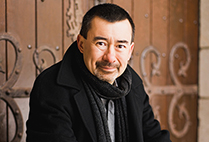
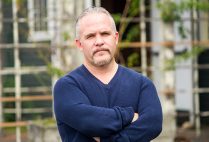






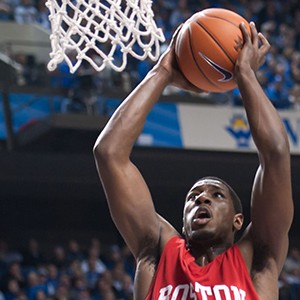
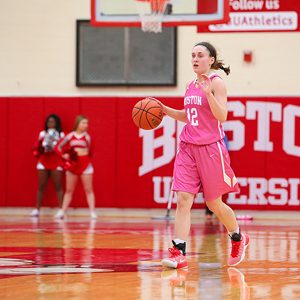
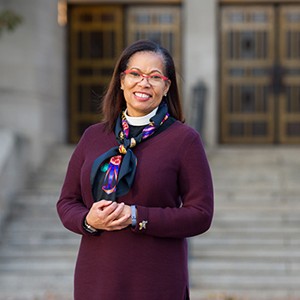
This is an excellent piece on Onaje! I am looking forward to reading. I spent 5 years at Madison Park H.S. as the JV Football coach and academic mentor, and I witnessed the transcendent possibilities of sport to work with socially vulnerable youth that are dealing with poverty, violence and loss of all sorts. I especially appreciate the importance of interviewing young athletes on their experience”…first time someone had expressed genuine interest in their stories”‘ and also as Rhianna noted above. “If academics are not careful, they can mistake language for experience…, that writing from a position of leisure” I am taking these to heart.
Thank you for this wonderful read and perspective – now I can reflect differently on what I observed all those hours spent with my son at AAU tournaments in the Boston area.
As a current Master of Divinity student in Berkeley (and a BU alum), this article caught my attention because I am interested in the many ways people find the sacred and the healing in their lives. As a former Roxbury resident, I lived there in 1993-4, I recall Manny Wilson’s death and the impact it had on some of the youth I was working with at Bikes Not Bombs Earn-a-Bike program, also housed in Roxbury.
Two things struck me from this article: Woodbine’s words “If academics are not careful, they can mistake language for experience…, that writing from a position of leisure [may lead to imposing] a static version of what they see [which strips the folks they are studying] of their agency, fluidity and humanity.” This is a very accurate perception of the academy’s position, and one I am working hard to not adopt.
Secondly, Fluker says that Onaje, “while referring to religion, is helping us to see ways in which human beings struggle to affirm their humanity…the deep spiritual healing that takes place out of ritualized grief.” What Onaje “gave up” at Yale in pursuit of deeper theological meaning and self-awareness and committment to humanity is reflected in the amazing journey his life has taken and the importance of his work. I look forward to reading Black Gods of the Asphalt and thank you, Onaje, for following your spirit.
This story just made me happy. I just released a book last week about what I learned from my mother through the game of basketball. I too am from Massachusetts but my experience in a mostly white area of the state was quite different. I would love for us to connect and find opportunities to work together. My book is called: “Get Your Head in the Game: Life Lessons Learned from My Mother Through the Game of Basketball.” Please check out my website for more information. I can’t wait to connect.